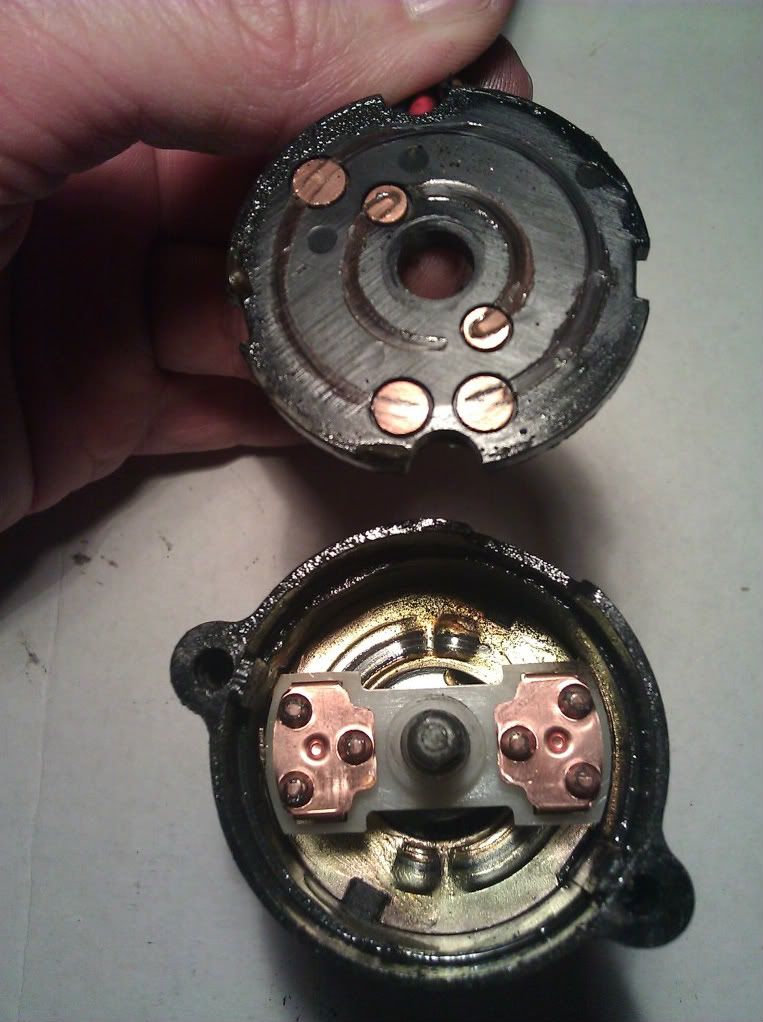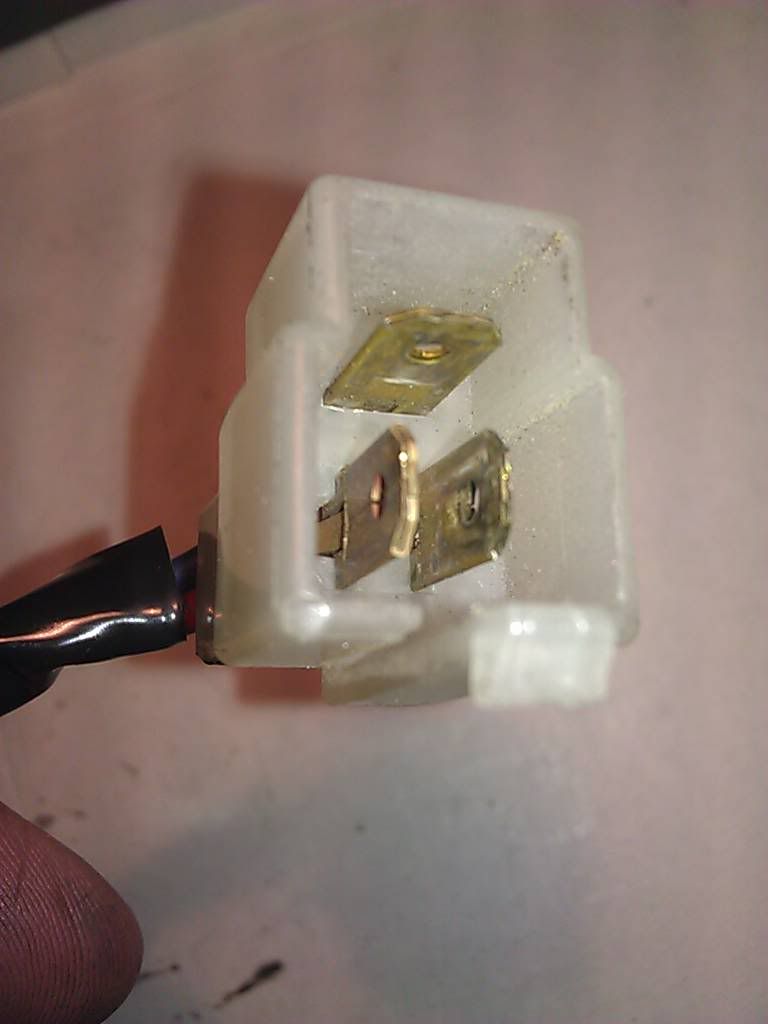Thank you, guys!
I removed the switch. When I test it with the ohm meter it seems to work(?):
OFF position:
There is no conductivity between the brown cable and the blue cable and no connection between the brown and the red one. No conductivity between red and blue either.
ON position:
Conductivity between the brown and the blue one and between the brown and the red one. Also between red and blue.
This means the switch works, correct? I will still clean it but if it works that means the issue is elsewhere.
Some of the cables in the headlight bucket looked questionable (insulation slightly damaged) and there is light corrosion in some of the connectors.
I looked for New Old Stock main switches on eBay but only saw used ones.
A failing main switch in the wrong moment is what I want to avoid. Is there a source for NOS main switches?
Thanks again!
Armin
I removed the switch. When I test it with the ohm meter it seems to work(?):
OFF position:
There is no conductivity between the brown cable and the blue cable and no connection between the brown and the red one. No conductivity between red and blue either.
ON position:
Conductivity between the brown and the blue one and between the brown and the red one. Also between red and blue.
This means the switch works, correct? I will still clean it but if it works that means the issue is elsewhere.
Some of the cables in the headlight bucket looked questionable (insulation slightly damaged) and there is light corrosion in some of the connectors.
I looked for New Old Stock main switches on eBay but only saw used ones.
A failing main switch in the wrong moment is what I want to avoid. Is there a source for NOS main switches?
Thanks again!
Armin



Comment